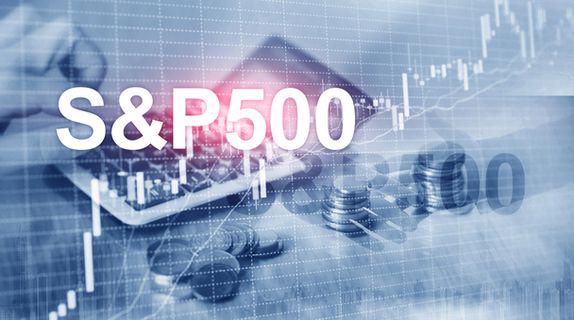
The S&P 500 had a good week due to the impressive start of Q1 earnings and favorable inflation data. In March, the consumer price index rose 5%, lower than the previous month's 6%, and met economists' expectations.
For a seamless experience, click “Redirect me.”

Don’t waste your time – keep track of how NFP affects the US dollar!
Data Collection Notice
We maintain a record of your data to run this website. By clicking the button, you agree to our Privacy Policy.

Beginner Forex Book
Your ultimate guide through the world of trading.
Check Your Inbox!
In our email, you will find the Forex 101 book. Just tap the button to get it!
Risk warning: ᏟᖴᎠs are complex instruments and come with a high risk of losing money rapidly due to leverage.
71.43% of retail investor accounts lose money when trading ᏟᖴᎠs with this provider.
You should consider whether you understand how ᏟᖴᎠs work and whether you can afford to take the high risk of losing your money.
Information is not investment advice
Amazon is one of the world’s biggest companies and plenty of traders consider either investing in it or trading its stock. Due to the latest news, Amazon became an attractive goal for traders. Let’s look through it to understand if Amazon is worth traders’ attention.
Amazon.com is an American multinational technology company specializing in e-commerce, cloud computing, digital streaming, and artificial intelligence. It has been called "one of the most influential economic and cultural forces in the world" and one of the world's most valuable brands. It is one of the Big Five American IT companies, along with Alphabet, Apple, Meta, and Microsoft.
Last week, Amazon announced a 20-for-1 share split. The company also revealed a massive $10 billion share buyback plan. Amazon's stock split was the fourth in its history, the last split occurred in September 1999. If shareholders approve the split, trading on the new basis will begin on June 6. The e-commerce giant's shares rose 5% on Thursday as traders welcomed Amazon's stock split and a new buyout. Shares gained another 1% in Friday's session.
Usually, the split and the following increase in the number of shares are subject to the approval of the shareholders at the annual meeting of the company. It is currently scheduled for May 25. Thus, If the shareholders approve this measure, each shareholder of record will receive 19 additional shares at the end of business on May 27 (the "record date") for each share they hold on to that date. They will automatically receive these shares in their account around June 3.
No doubt that many investors would love to own an Amazon stock but either don't have almost $3,000 to invest in or don't want to invest that much money in just one company. Now, these investors can buy a fraction of one share, but they would have to use only certain online brokerage services. Not all brokerages allow investors to buy or sell fractional shares. Moreover, some investors simply don’t like to own fractional shares.
Let's assume that the Amazon stock split happened. In this case, the split-adjusted price per share would be one-twentieth of $2,936.35, or about $146.82. This stock price (which should not be more expensive than the actual split-adjusted price, barring a huge jump or drop in the broader market over the next few months) is likely to increase the number of people who buy shares. Indeed, the market agrees, which is why Amazon shares surged on Thursday. Stocks often bounce back after the split is announced, but there are all chances to believe this trend could be sustained.
In addition, a 20-to-1 stock split could give Amazon a better chance of being included in the Dow Jones Industrial Average (DJIA), the oldest US market index in existence. This index of 30 large stocks supposedly reflects the broad US stock market and economy. However, for some time it wasn’t completely true, because this index usually avoids very expensive stocks (which tended to be "big tech stocks") as it's a price-weighted index. In other words, nearly $3,000 worth of Amazon shares will have a huge impact on the index.
Adding Amazon to the Dow will bring it to the attention of more individual investors. What's more, it would also mean that Dow-based funds would have to buy Amazon shares. As the result, higher demand for shares should drive up their price.
Besides the split, Amazon's board of directors also approved a new share buyback program for up to $10 billion. This share buyback program "replaces a previous $5 billion share buyback authorization approved by the Board of Directors in 2016, under which the company bought back $2.12 billion of its shares," Amazon said in the March 9 SEC filing.
To be clear, Amazon is not currently repurchasing its shares. The Board has just put in place a new program so that when top management decides to buy back shares, they can do so immediately. Generally, companies buy back their shares when senior management believes that the shares are undervalued compared to the company's long-term growth prospects.
To sum up, it seems like Amazon has opened even more opportunities for itself and the perspective of them is positive. Up to the announcement in May 2022, we are sure we will hear more news about this company, so stay tuned.

The S&P 500 had a good week due to the impressive start of Q1 earnings and favorable inflation data. In March, the consumer price index rose 5%, lower than the previous month's 6%, and met economists' expectations.

FAANG stocks started recovering. Which ones are the best according to fundamental analysis?

The previous year 2022, was undoubtedly tumultuous for the stock markets, with several stocks plummeting across multiple industries. Analysts have blamed the hard times on inflation, hawkish federal reserve policies, an impending global recession, and the ongoing crisis in Ukraine. This year, however, we're beginning to see some recovery in the stock markets. This article will find a few stocks worth buying this year.

eurusd-is-falling-what-to-expect-from-the-future-price-movement

Greetings, fellow forex traders! Exciting news for those with an eye on the Australian market - the upcoming interest rate decision could be good news for Aussies looking to refinance or take out new loans. The Mortgage and Finance Association Australia CEO, Anja Pannek, has...

Hold onto your hats, folks! The Japanese yen took a nosedive after the Bank of Japan (BOJ) left its ultra-loose policy settings unchanged, including its closely watched yield curve control (YCC) policy. But wait, there's more! The BOJ also removed its forward guidance, which had previously pledged to keep interest rates at current or lower levels. So, what's the scoop? Market expectations had been subdued going into the meeting, but some were still hoping for tweaks to the forward guidance to prepare for an eventual exit from the bank's massive stimulus
Your request is accepted.
We will call you at the time interval that you chose
Next callback request for this phone number will be available in 00:30:00
If you have an urgent issue please contact us via
Live chat
Internal error. Please try again later